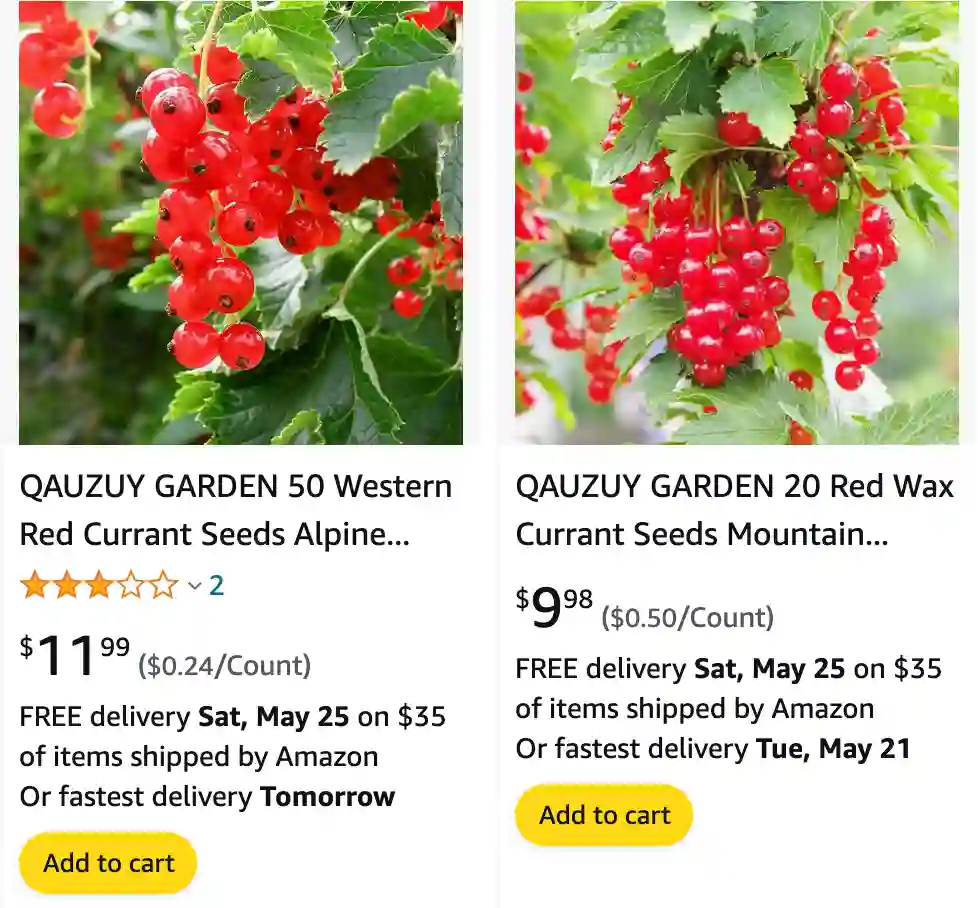
Are Alpine currants edible?
I remember looking into Alpine currants and discovered that while they are technically edible, they aren’t particularly tasty. They’re quite tart and not very sweet, so most people don’t eat them fresh. They’re sometimes used in jams or jellies, but even then, other types of currants are usually preferred for their better flavor.
Plant Family: Grossulariaceae – 196 Species in Genus Ribes
How to plant Alpine currant?
Planting Alpine currants was straightforward. I chose a spot with well-drained soil and partial shade. After digging a hole about twice the size of the root ball, I mixed some compost into the soil to enrich it before placing the plant in and backfilling with soil. Watering well after planting helped the currant establish itself.
Is Alpine currant deer resistant?
I’ve read that Alpine currants are somewhat deer resistant, which was a relief because deer are a common issue in my area. However, no plant is entirely deer-proof, so while they might nibble a bit, they tend to leave these alone compared to more palatable plants.
Can you grow Alpine currant in Virginia?
Growing Alpine currants in Virginia is definitely possible. The climate here, with its distinct seasons and relatively mild winters, suits them well. They can thrive in USDA zones 3 to 7, so Virginia’s varied climate works nicely for these hardy shrubs.
Do Green Mound Alpine currant lose their leaves in winter?
Green Mound Alpine currants do lose their leaves in winter, which I found a bit disappointing at first since I wanted year-round greenery. However, their dense foliage during the growing season makes up for it, creating a lush hedge or shrub border.
How do I prune an Alpine currant?
Pruning my Alpine currant involves cutting back any dead or damaged branches in late winter or early spring before new growth begins. I also thin out the interior to improve air circulation and remove any suckers that appear. This keeps the plant healthy and encourages better growth.
How fast does Alpine currant grow?
The growth rate of Alpine currant is moderate. In my experience, it grows about 12 to 18 inches per year, depending on the conditions. It’s not a fast grower, but with patience, it fills out nicely and forms a dense hedge over a few years.
How to propagate Alpine currant?
To propagate Alpine currant, I’ve used stem cuttings with good success. In late spring or early summer, I cut a healthy stem about 6 inches long, stripped the lower leaves, and dipped the cut end in rooting hormone before planting it in moist potting soil. Keeping it humid and in indirect light helped the cuttings root.
How to rejuvenate an Alpine currant hedge?
Rejuvenating an Alpine currant hedge involves more severe pruning. I cut back one-third of the oldest branches down to the base each year over three years. This gradual approach avoids shocking the plant and encourages vigorous new growth, rejuvenating the hedge.
Is Alpine currant evergreen?
Alpine currants are not evergreen; they lose their leaves in the fall. This deciduous nature means they provide great coverage and foliage during the growing season but will be bare in winter. It’s something to consider depending on your landscape needs.
Is Alpine currant poisonous to dogs?
I made sure to check if Alpine currant is poisonous to dogs, and thankfully, they are not listed as toxic. While I wouldn’t let my dog eat a lot of any plant, it’s reassuring to know that a nibble here and there shouldn’t cause harm.
When do Alpine currants ripen?
Alpine currants typically ripen in mid to late summer. I noticed the small, red berries appearing around July to August. They don’t always produce a heavy crop, especially in the ornamental varieties, but they do add a bit of seasonal interest.
Where can I buy Alpine currant in Virginia?
Finding Alpine currants in Virginia wasn’t too difficult. I checked local nurseries and garden centers, particularly those specializing in native or hardy plants. Additionally, some online plant retailers offer them, often with delivery options suitable for Virginia’s climate.
If i die, water my plants!



